Landmark Comic Book Storylines Part 3: The 80s
The beginning of mini-series and crossovers
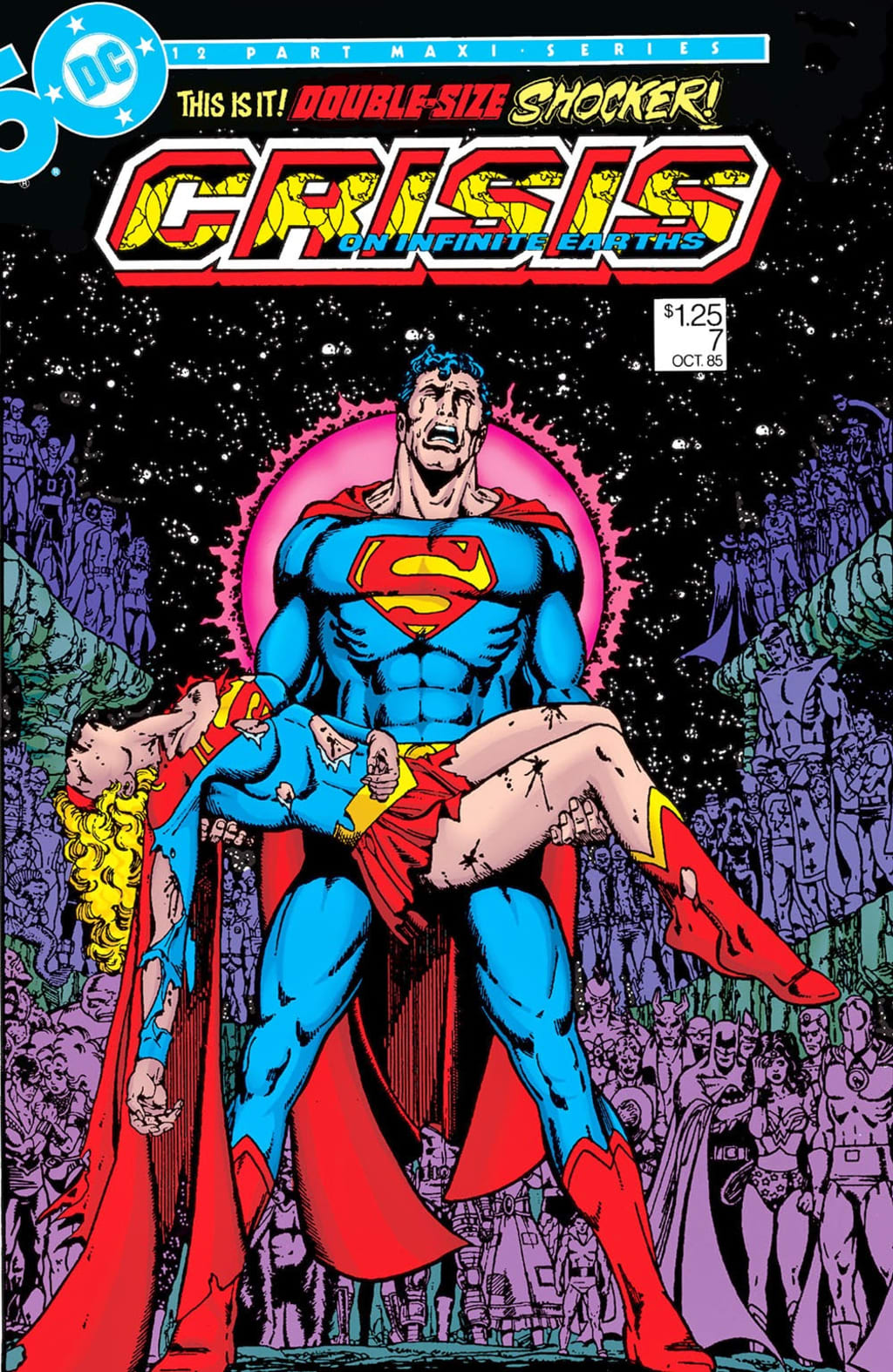
The 1970s began the Bronze Age of comics, and the 1980s ended it, essentially with the issue seen above. Characters got darker in the 80s, and entire continuities were rebooted. Plus, with the advent of mini-series, spin-offs, and major crossovers, it became a lot more expensive to read full stories. It used to be an event to see the Fantastic Four and Avengers together, and it happened for maybe one or two issues. Suddenly a crossover was multiple issues across multiple titles, with some chapters typically being better done than others, but you wanted to read them all.
1. The Brood Saga (Uncanny X-Men 162-164)
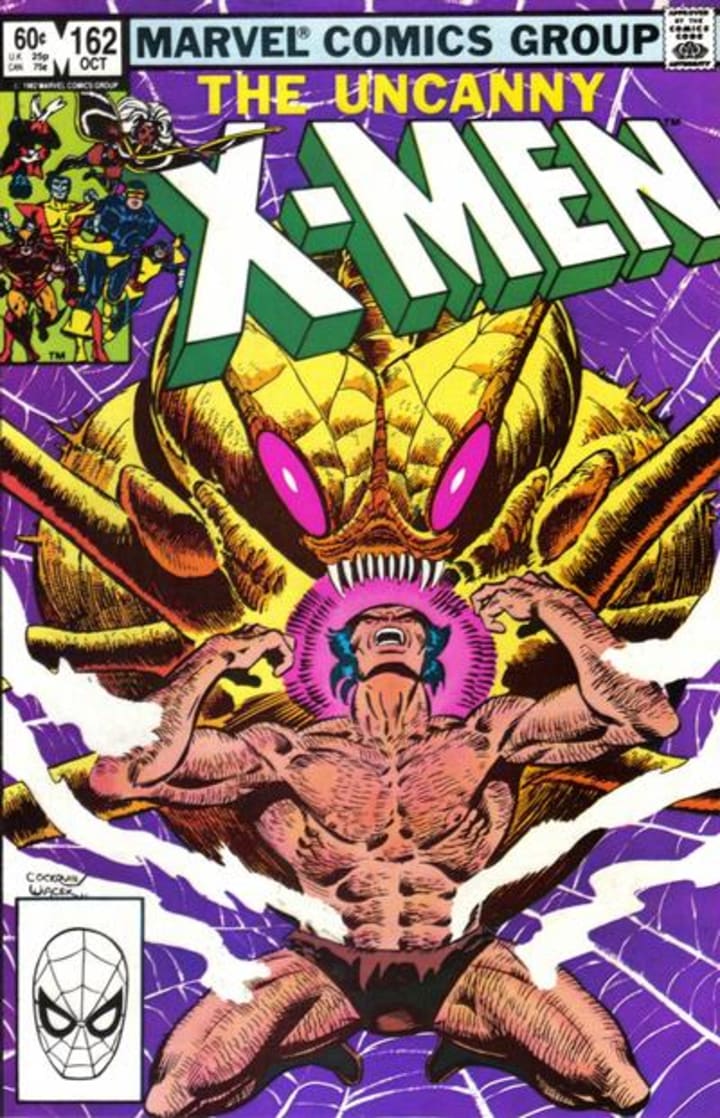
Yes, essentially the storyline is a rip-off of "Alien" with Kitty Pryde as Ripley, but the repercussions of the story have been major. In space fighting the alien race the Brood (aka the Sleazoids), the X-Men are considered dead, which leads to Professor Xavier starting a new class of students, aka "The New Mutants." It also leads to X-Men ally Carol "Ms. Marvel" Danvers being experimented on by the Brood, resulting in her major power upgrade and name change to "Binary."
2. Wolverine in Japan (Wolverine vol. 1 1-4, Uncanny X-Men 158)
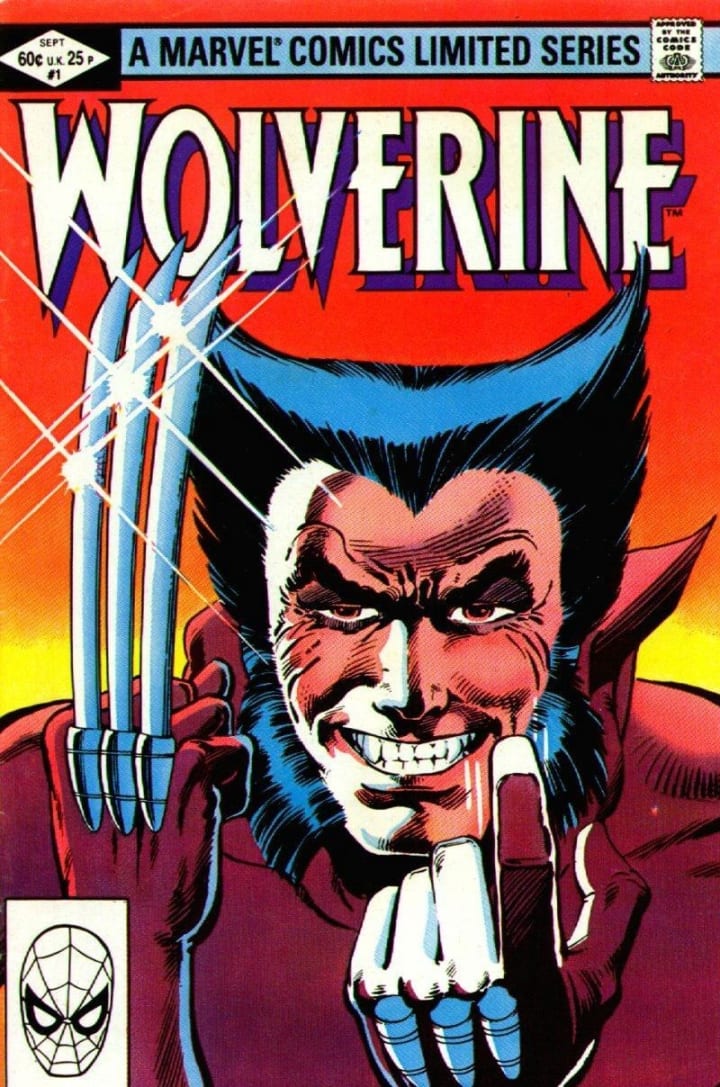
It seems unlikely today, even impossible, but when Wolverine was initially a member of the all-new, all-different X-Men, he was the least popular member of the team, routinely overpowered by everyone they encountered. It wasn't until he took on the Hellfire Club alone during the Phoenix Saga that the character developed a following, which was hugely expanded by this landmark series by legendary creators Chris Claremont and Frank Miller, both of them at the top of their game. In this we see Wolverine travel to Japan to meet up with his lady love Mariko, and for the first time we see Wolverine fight ninjas. Lots of them. A theme that would be replayed again and again to the present day. We also explore more of Wolverine's past and examine how he is a tragic hero continually at war with himself as much as the world around him.
3. Magik in Limbo (Uncanny X-Men 160, Magik 1-4)
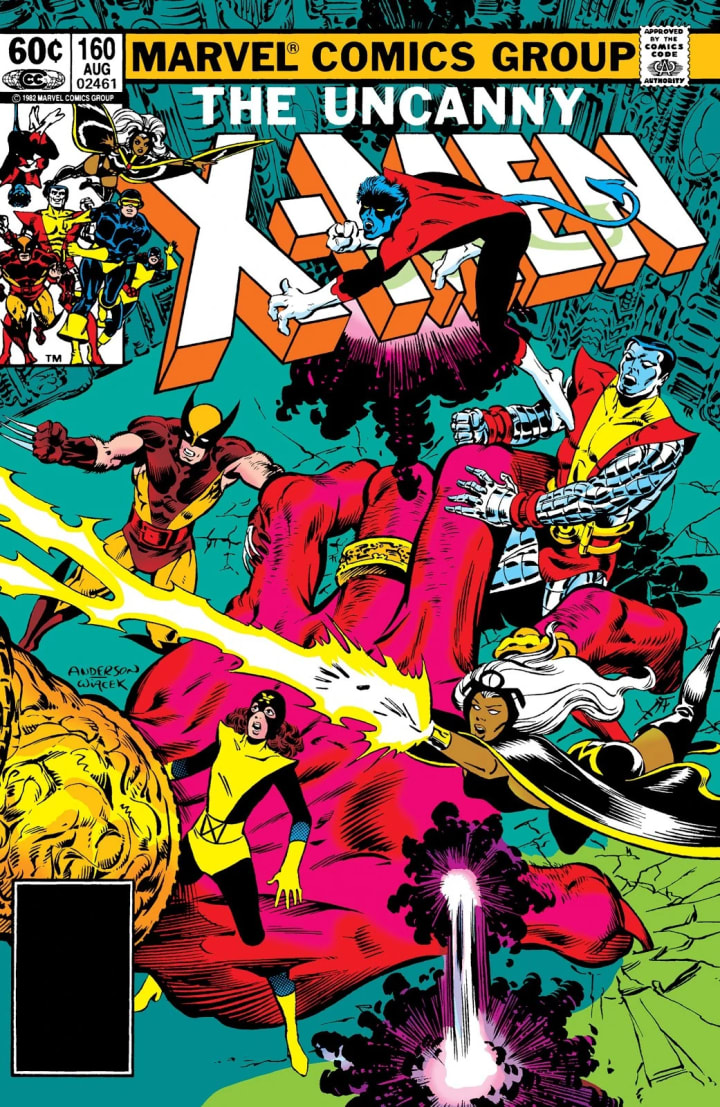
When we first met Colossus's little sister Illyana Rasputin, he was rescuing her from a runaway tractor in his very first appearance before joining the team. Years later, still a little girl, Illyana came to visit her brother in America, and mysterious circles of light, which were revealed to be portals, kept appearing around her. In this story, Illyana disappears though one of those portals and is pulled out by Kitty Pryde mere moments later. When she emerges she is no longer a little girl, but a 14-year old, the same age as Kitty. The story of what happened to her is told in the mini-series "Magik," in which Illyana spends several years in the demonic dimension known as Limbo, where time passes differently and magic is supreme. There, alternate versions of the X-Men faced different fates. Wolverine and Colossus are dead, Nightcrawler has forgotten his humanity and embraced his role as a subservient demon, and Storm is a sorceress. Limbo is ruled by the evil demonic sorceror Belasco and his evil minions, and Belasco wants Illyana to be his apprentice.
This story ties directly into Illyana joining the New Mutants and eventually the X-Men as Magik, and it also lays the groundwork for the later mega-crossover "Inferno."
4. Batman: Year One (Batman 404-407)
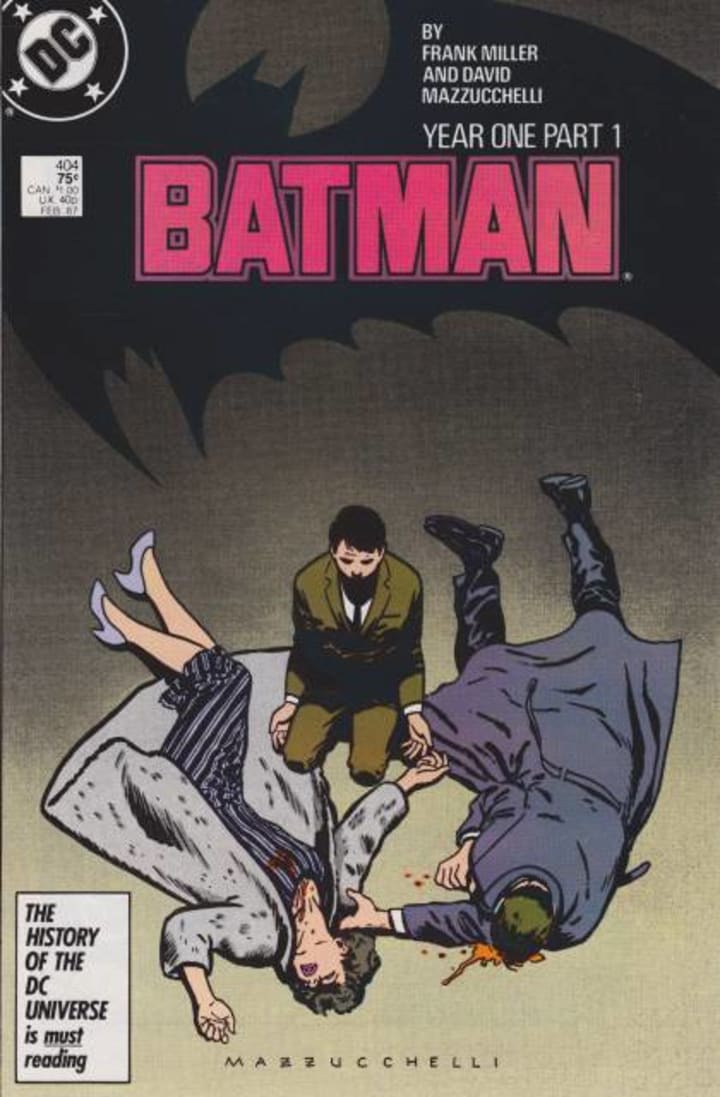
The impact of this story cannot be overestimated. While Batman writer and editor Denny O'Neil was already pushing to return the character to his dark roots as a creature of the night avenging the deaths of his parents by waging a war on crime, that turn really took hold with "Batman: Year One," which also provided the most famous, definitive retelling of Batman's origin to date. This began writer and artist Frank Miller's involvement with Batman, which continues on critically acclaimed projects to this day. Year One also set the tone for many similar storylines throughout the 80s.
5. Crisis on Infinite Earths
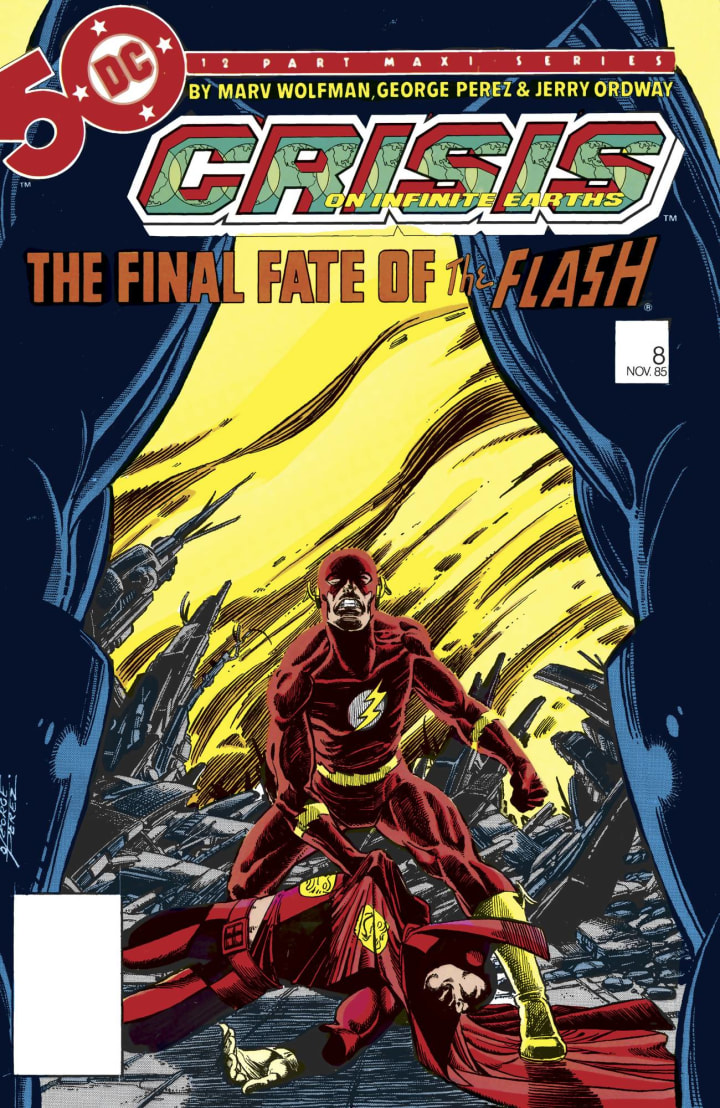
A 12 part "maxi-series" (since mini-series were typically 4 issues) with crossover chapters in nearly every DC title, Crisis rebooted the DC Universe for the first time.
Over the decades, DC had acquired the rights to characters from different companies, and rather than merging them into mainstream DC reality, made them part of other realities. At the same time, the heroes of the Golden Age such as the original Flash and Green Lantern were also residents of other Earths, while the contemporary versions seen since the 1960s were residents of Earth 1. Many stories had been told about interactions of the characters of various Earths, but these were always special events.
Crisis was a story in which a cosmic being known as the Anti-Monitor was destroying other realities, and the super characters of each reality were trying and failing to stop him. Characters died, others were created, and the end result was one streamlined continuity where all of the characters existed in one reality, one timestream. This effect was most profoundly seen with the Justice Society and Justice League. After Crisis, the JSA were heroes of the 40s and 50s who had retired or even disappeared, but their careers inspired the creation of the JLA.
Similarly, and perhaps with an even greater impact, Silver Age Flash Barry Allen died fighting the Anti-Monitor. He was arguably the first character of DC's Silver Age, and definitely one of the greatest, serving as a founding member of the Justice League and starring in his own long-term title. With Barry Allen gone, long-time sidekick and Teen Titans co-founder Wally (Kid Flash) West filled the role of Fastest Man Alive.
6. A Death in the Family (Batman 426-429)
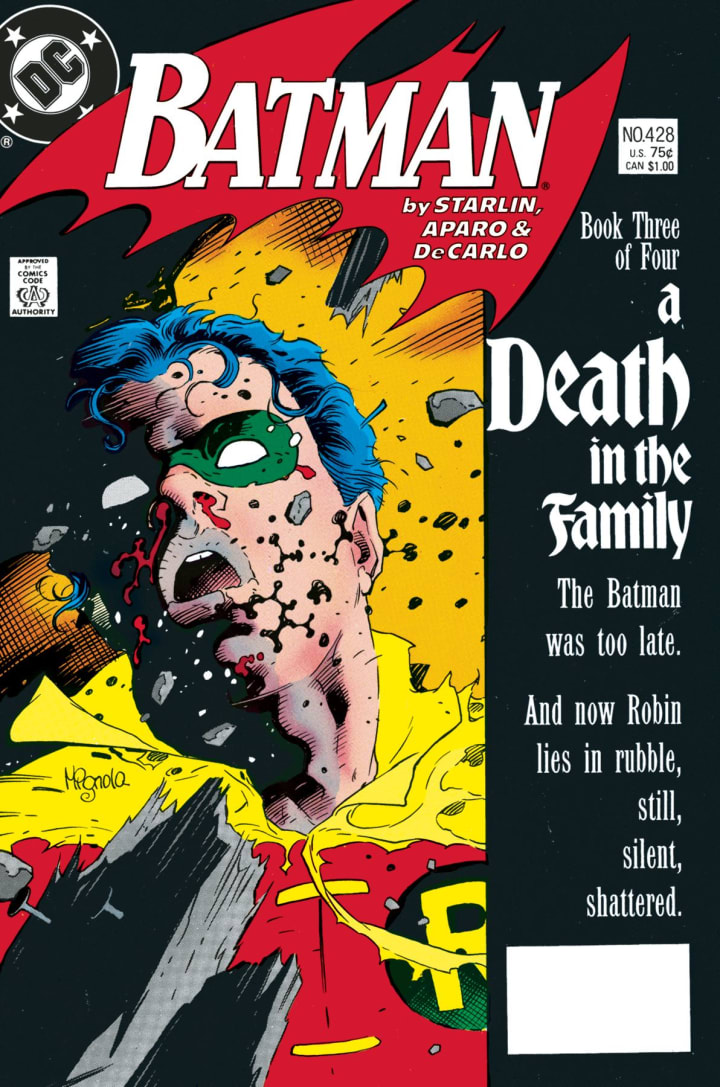
Robin was one of the most popular characters of the 60s and 70s. As much as readers loved Batman because you could train to be him and never hope to be Superman, they loved Robin more because he was a kid. But the Robin most readers knew from comics, cartoons, and the tv show, Dick Grayson, had grown up and moved on years earlier (as seen in Part 2 of this series, see link at the end of this article). Since then, Batman trained a new Robin, Jason Todd.
Jason Todd was an orphan and street kid whom Batman caught trying to steal the hubcaps off of the Batmobile. Batman admired the teen's guts, and trained him as his new partner. Sometimes that was fine, and Jason went on to be a member of the Teen Titans, mentored by original Robin Dick Grayson, now Nightwing. But Jason was also obnoxious at times. His character didn't really sit well with a lot of fans.
So, in the era of dark storylines, the Joker was brought back to full homicidal maniac status in a new 4-part series written by Jim Starlin, in which readers got to decide the fate of Robin. Attempting to rescue his long-lost mother from the Joker while on a mission with Batman, Robin is overpowered by the Joker, who savagely beats him with a crowbar. Clearly this is not the mischievous clown who created smiling fish in the 70s. At the end of the issue, readers were encouraged to vote using special phone numbers to determine if Robin lived or died. By a narrow margin, fans voted to kill him, and Batman's world was changed forever.
This story directly influenced the introduction of third Robin Tim Drake in "Batman: Year Three" as well as the later epic "Hush."
7. The Dark Knight Returns (4 issue limited series)
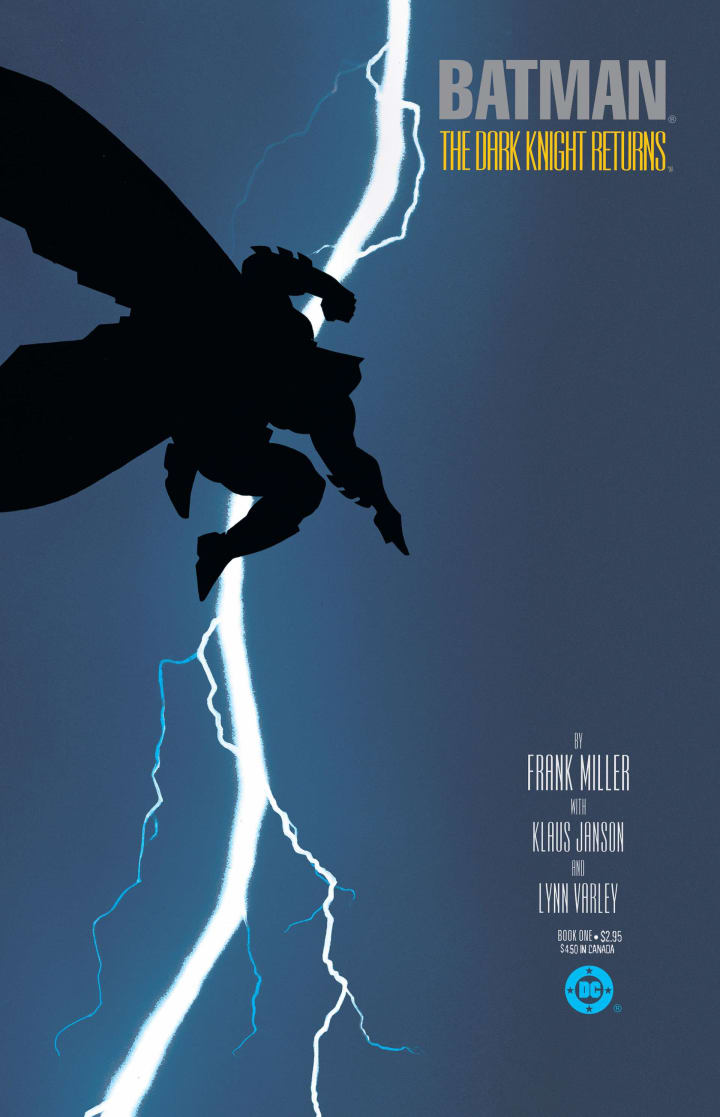
The two most iconic images of Batman are probably the covers of the first chapters of "Year One" and "The Dark Knight Returns" and both of them are courtesy of Frank Miller. With "Year One" Miller showed us where Batman's story began, and essentially with "The Dark Knight Returns" he was showing is where it ends, though there have been several successive series since then.
In this series, Bruce Wayne is in his 50s and has been retired as Batman for several years. Commissioner Gordon is about to retire. The Justice League has broken up. Jason Todd, the second Robin, is dead and Dick Grayson, the original Robin, is no longer fighting crime. But Gotham City still has problems with corruption and crime, particularly a new gang, The Mutants (a spoof of the X-Men) who have become active. Coming out of retirement, Wayne becomes the Batman once more, training a new Robin, Carrie Kelly, to help him in his war on crime. This was the first time there has ever been a female Robin.
Batman's return attracts the attention of two figures from his past: The Joker, who only wanted to commit crimes if it meant challenging Batman, and Superman, who has become the lapdog of the President. Batman has final battles with each of them, and his encounter with Superman directly influences the film "Batman v Superman: Dawn of Justice."
8. The Judas Contract (Tales of the Teen Titans 42-44, Annual 3)
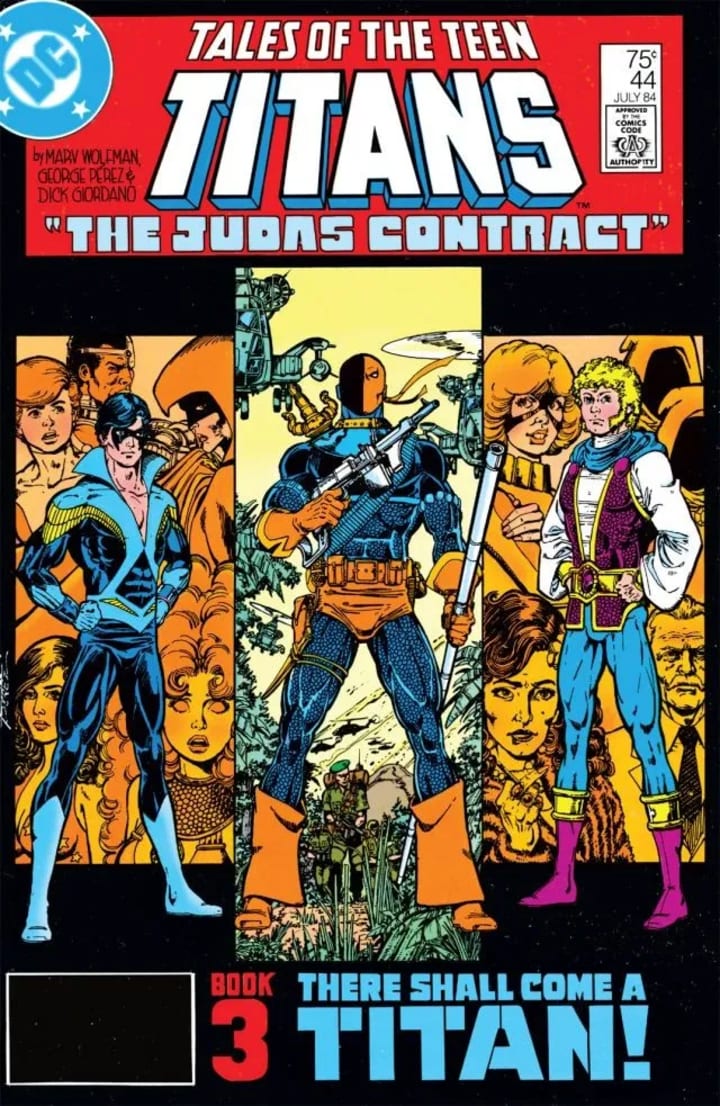
The original Teen Titans (Robin, Kid Flash, Wonder Girl, Speedy, Aqualad) had broken up. Now older, the group reformed with new members Starfire, Raven, Cyborg, and Changeling (formerly Beast Boy), and the team had more serious adventures, with this the most serious of all. Assassin Deathstroke the Terminator is out to kill the Titans. His son failed to help him, but Deathstroke has another aide in his plan, new Titan Terra, who is secretly his operative. But has being in the Titans made her want to actually be good? This story brought home the idea that being a teen hero is serious business. The Titans weren't saving the local malt shop from comical villains anymore. They were young heroes working in an adult world, where people were sometimes killed.
9. The Mutant Massacre (Uncanny X-Men 210-214, X-Factor 9-10)
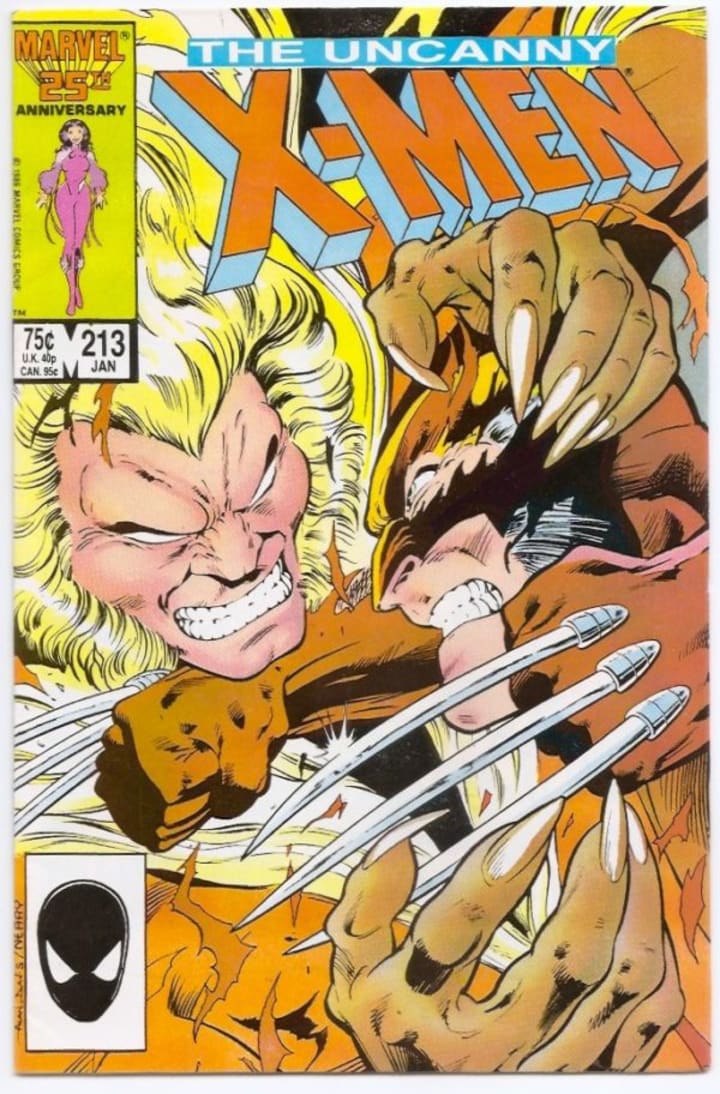
This storyline actually includes other issues of other comics, such as Thor, Daredevil. and Power Pack, but it mainly ran through the pages of X-Men and the new spinoff title X-Factor, which reunited the original X-Men team for the first time in more than 10 years.
The Morlocks had been established as the ultimate outcasts - a community of mutants living in the sewers beneath New York City. After several encounters with the Morlocks, the mutant community had been quiet, keeping to itself, but under the protection of the X-Men since team leader Storm had also become leader of the Morlocks.
Disaster strikes when a brutal new team called the Marauders, which includes Wolverine's arch-foe Sabretooth, starts wiping out the Morlocks under the orders of the mysterious Mister Sinister. The Marauders prove to be a team every bit as tough as the X-Men, with heavy casualties on both sides. The X-Men are changed forever as they lose team mainstays Nightcrawler, Colossus, and Shadowcat (Kitty Pryde) while X-Factor member Angel's wings are torn out, leading to his later suicide. During the story, new X-Men also signed on - future popular members such as Dazzler and Psylocke, while Longshot joined and Havok returned.
10. Kraven's Last Hunt (Web of Spider-Man 31-32, Amazing Spider-Man 293-294, Peter Parker the Spectacular Spider-Man 131-132)
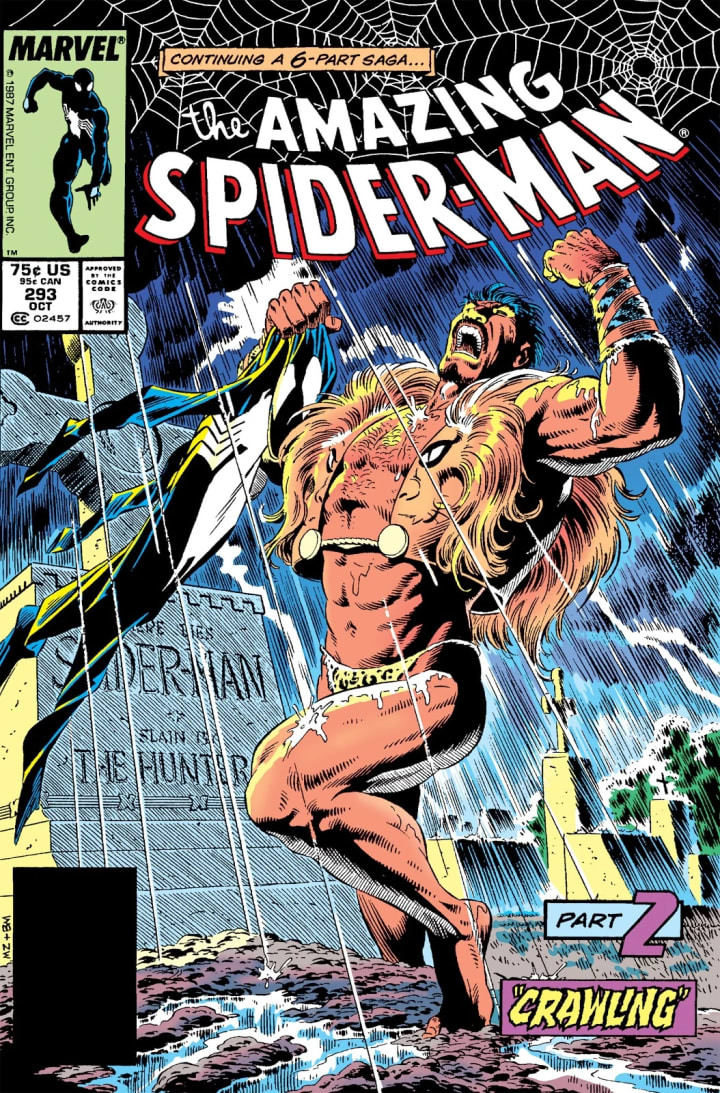
While he had always been one of Spider-Man's classic villains, Kraven the Hunter was never as much of a match for him as perhaps Doctor Octopus, the Lizard, or the Green Goblin. He was a hunter who sometimes used technology or stealth to present a challenge, but he could never match Spider-Man's strength, agility, or speed. In this story, considered one of the best Spider-Man stories of all time, we look into the mind of Kraven, and it's a dark and twisted place. Pushed past the brink of depression due to a family history of madness and a history of defeats, Kraven is determined to deliver the ultimate defeat to his foe by killing him and taking his place. And in the very first issue, he succeeds.
11. Secret Wars (Marvel Super Hero Secret Wars 1-12)
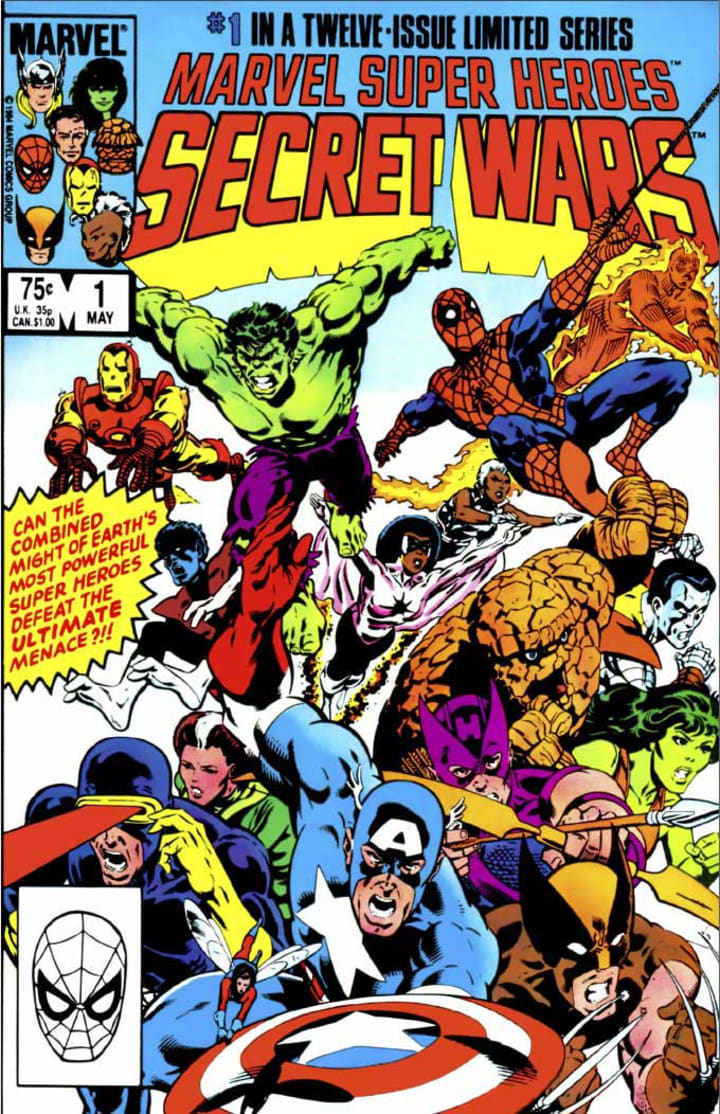
In the 60s, for the first time, the idea of fighting the ultimate power was addressed when the Fantastic Four fought Galactus (see the link to Part 1 of this series below). In the 70s this idea came up again when the combined forces of the Avengers and the original Guardians of the Galaxy fought Korvac (noted in Part 2 of this series). In "Secret Wars" this idea is expanded yet again as the seemingly omnipotent being The Beyonder creates a planet out of nothing and brings Earth's greatest heroes and villains there to fight so he might learn of the nature of good and evil. It's the Avengers, Fantastic Four, and Avengers versus Doctor Doom, Galactus, Doctor Octopus, Molecule Man, Magneto, and the Wrecking Crew.
One of the long-term effects of this series in the landmark introduction of Spider-Man's original black costume - a sentient symbiotic alien that one day bonds with Eddie Brock to become Venom.
12. Death of Elektra
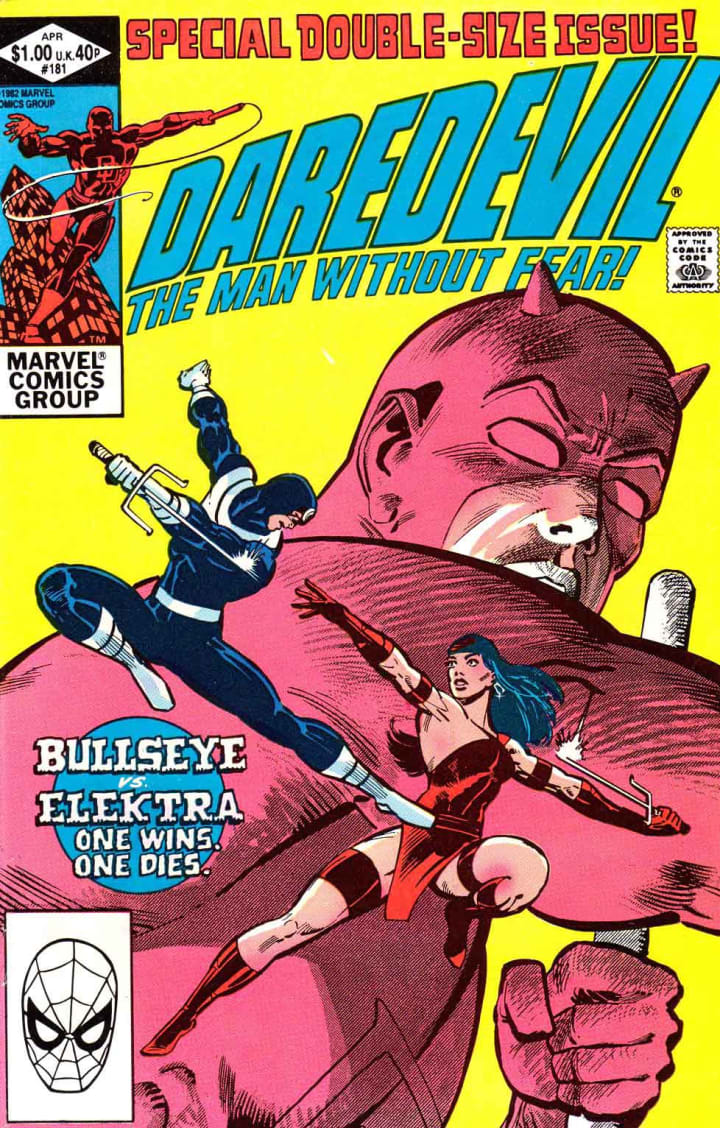
During Frank Miller's run on Daredevil he completely changed the title, adding to the character's origin and providing him with two key things: a villain who matched him in skill (Bullseye) and a passionate love interest who loved Matt Murdock the man and Daredevil the hero. That love interest, Elektra was also a skilled assassin who fought with or against Daredevil depending on the situation. Unlike his previous partner in romance and crime fighting the Black Widow, Daredevil's history with Elektra went back to his college days. She was truly the love of his life. In this story, Bullseye and Elektra face each other in the ultimate battle, changing all of their lives forever. This issue and the story around it are much of the basis for the "Daredevil" film.
13. Daredevil: Born Again (Daredevil 227-233)
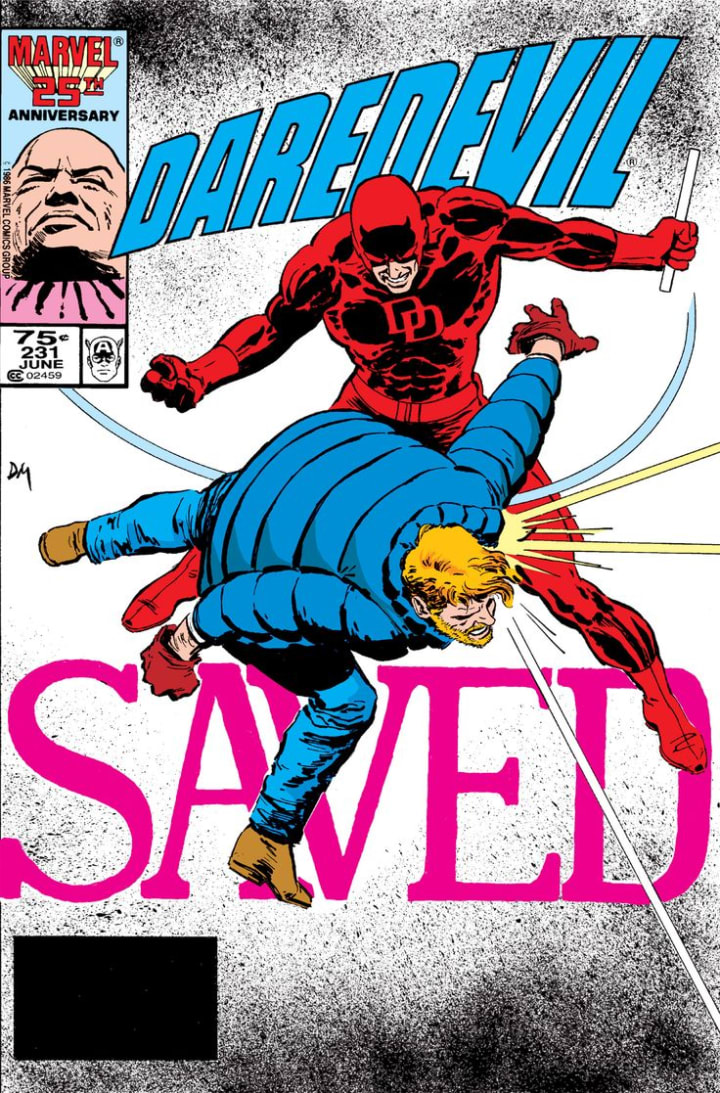
Frank Miller left the "Daredevil" title after issue 191, but returned later to deconstruct and reconstruct the character once more. Miller had already added the mentor Stick and ninja/martial arts training to Daredevil's mythos, as well as creating Elektra and promoting Bullseye to major villain status. This time around he asked the question of whatever happened to Matt Murdock's mother, and investigated Murdock's faith, given that it was established he grew up in a largely poor Irish Catholic neighborhood.
These things were all addressed while Miller developed the Kingpin, originally a Spider-Man foe, as Daredevil's ultimate nemesis. Since Daredevil the hero is at heart an attorney who fights crime as a vigilante to serve the law, it makes sense that his chief foe would be the physically powerful head of the city's organized crime.
In this story, former Daredevil love interest Karen Page, who has a heroin problem, sells the secrets of Daredevil's identity to the Kingpin for drug money. The Kingpin then uses this information to turn Matt Murdock's world upside down, smearing him in the press, stripping him of his legal license, and making him homeless. Murdock is left with nothing but his faith and his own ability to literally pull himself up from the gutter.
14. Death of Captain Marvel (Marvel Graphic Novel #1)
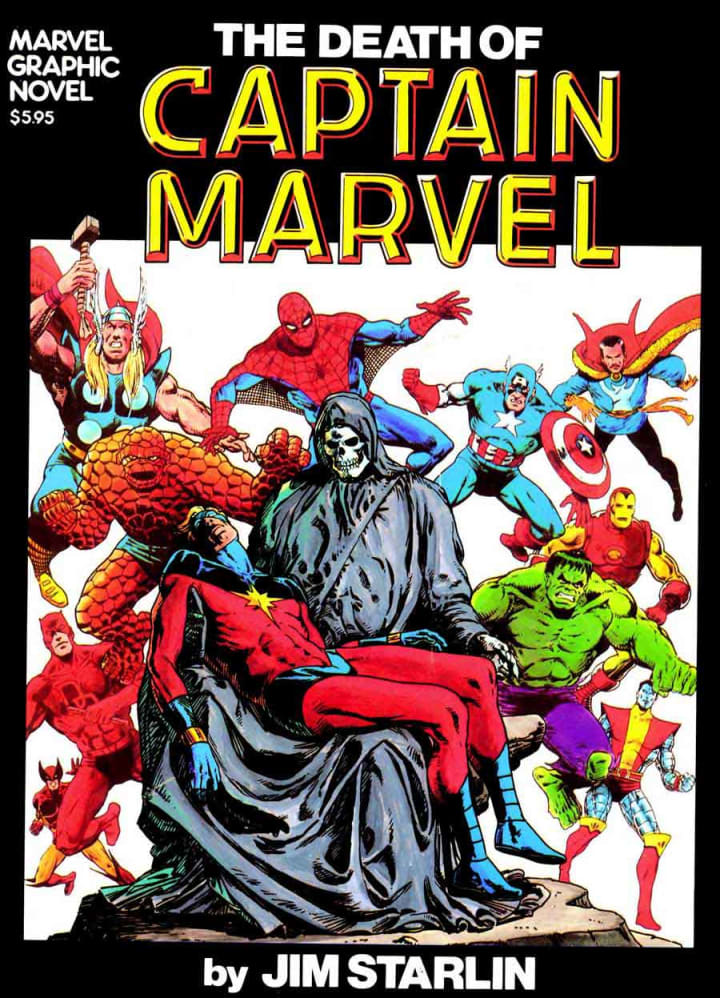
The definition of "graphic novel" has changed over the years as comic books have become a more acceptable form of literature. Regardless of content, comic books are individual issues. Trade paperbacks are typically collections of previous issues or even entire seriesm such as "The Chapions" collected edition. Collected editions may also be in hardcover, such as the Jack Kirby Omnibus collection of all his New Gods-related stories for DC. Graphic novels, as originally defined, are one single issue, in longer format, on higher quality paper, at a higher price point with more mature themes than a typical comic book. The first Marvel graphic novel defines this perfectly.
When writer/artist Jim Starlin was told the "Captain Marvel" series was going to be cancelled due to declining sales, Starlin said he wanted to kill the character and have him stay dead. All too often, a series ended, but the character was brought back when some other creator had interest, or when the publisher needed to retain rights to the character. Starlin wanted to go a different route and have Mar-vell not only stay dead but die of cancer, while making the death every bit as heroic as when a character died in an explosion.
To this day, Marvel has stayed true to their comittment of keeping Captain Marvel dead. There have been many heroes named Captain Marvel (see the linked article on the history of Captain Marvel) but Mar-Vell has stayed dead except for ocassional imposters, or stories in which characters such as the Avengers fight an army of the dead. But this story, and Mar-Vell's legacy, have inspired many, including the current Captain Marvel, Carol Danvers.
15. Armor Wars (Iron Man 225-232)
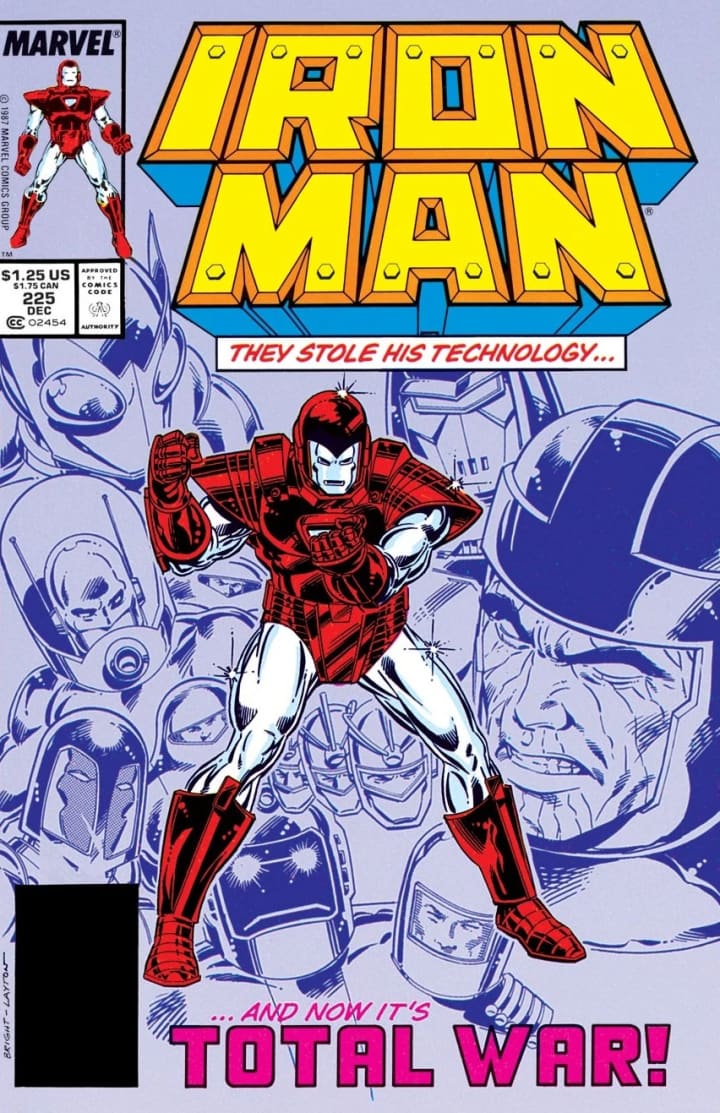
Produced by David Michelenie and Bob Layton, the same classic team that provided the "Demon in a Bottle" saga, this story shows Tony (Iron Man) Stark back in control of his life, but still not trusted by those around him because of his prior fall. When Stark discovers that his technology has been stolen and used to develop the weapons of multiple armored criminals, he decides to use "negator packs" to wipe out the criminals' armor. This would seem to be a worthy quest except 1. Sometimes he's wrong, and 2. Two of the armored foes, the Crimson Dynamo and Titanium Man, are official operatives of the Soviet Union, and attacking them unprovoked could start an international incident. Co-starring Ant-Man, as well as the West Coast Avengers, the story will soon be featured as a series on Disney + starring War Machine.
16. Vision and the Scarlet Witch (Vol. 2 1-12)
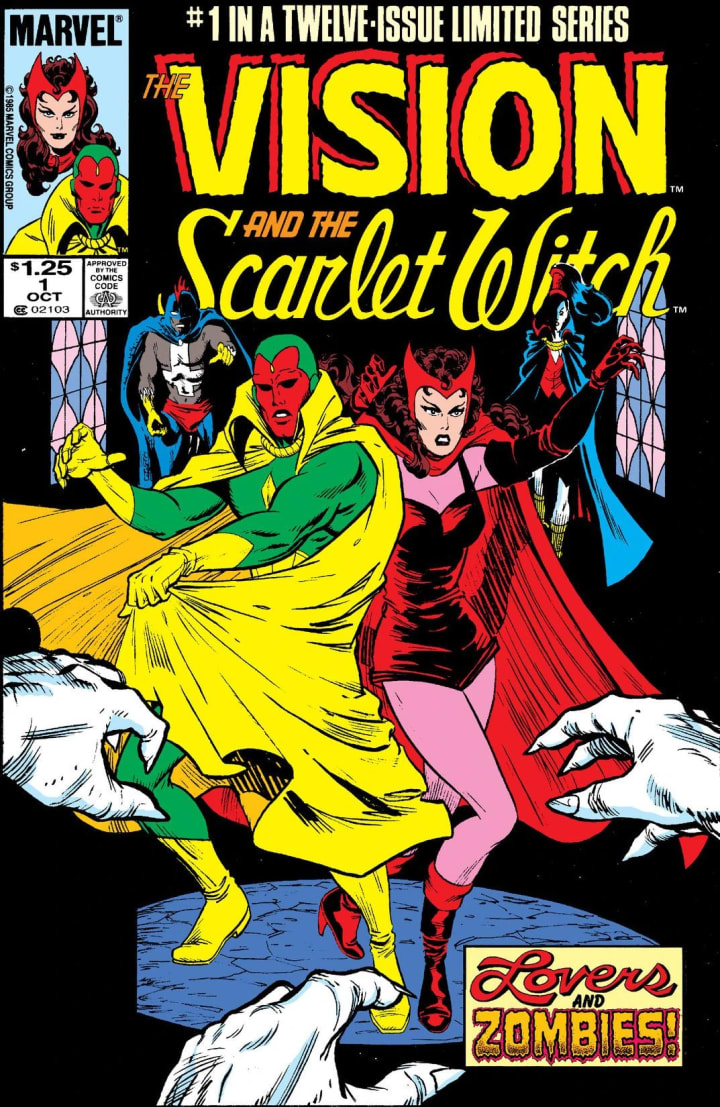
If you loved the "WandaVision" tv series, and most viewers did, this is the comic series you'll have to find. There was a prior 4-issue "Vision and the Scarlet Witch" mini-series which was good, but this series is really where you have the groundwork for the show.
Vision and Scarlet Witch had both been Avengers for a long time. They fell in love on the team, they got married when they were on the team, they stayed on the team after they were married. But in Avengers 211 they decided to leave the team and try to pursue something like a normal life together, in the suburbs of Connecticut. But how normal can life be for a synthetic being and a mutant sorceress?
The series follows the couple's attempt to find normalcy, as well as what happens when Wanda uses her powers to become pregnant with twins. A special pregnancy requires a special doctor, so famed surgeon and sorceror Doctor Strange oversees the pregnancy and the birth, aided by witch Agatha Harkness as midwife and Wanda's mentor.
Also appearing in the series are Wanda's twin brother Quicksilver, her father Magneto, and Vision's "brothers" Wonder Man and the Grim Reaper. It's a complex family.
17. Iron Monger (Iron Man 200)
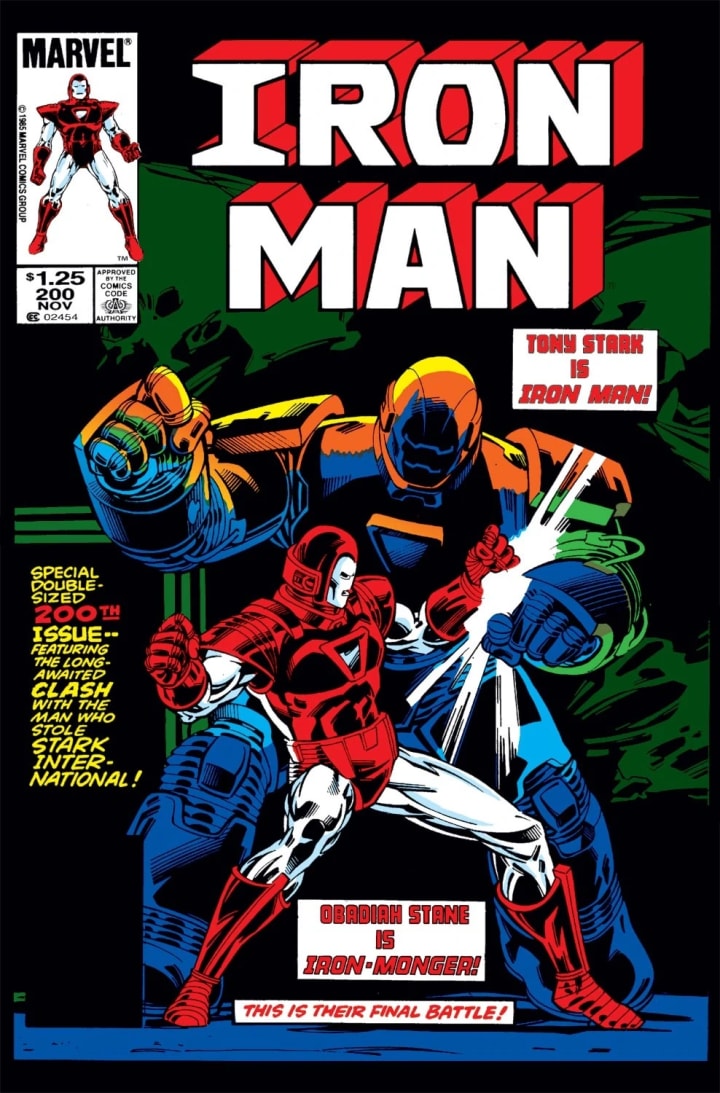
After the "Demon in a Bottle" storyline, Tony Stark's battle with alcoholism didn't end. It was and continues to be a daily struggle. At one point, when the pressures of his life were at a fever pitch, Stark fell off the wagon and lost everything, ending up on the streets. This was due to the schemes of corporate rival Obadiah Stane, who was an associate of Stark's father. Stane takes over Stark Enterprises and Stark must find his way back as a man, a businessman, and as Iron Man. But Stane has discovered the secret of Stark's technology and created armor of his own, forcing a showdown between Tony in his new red and silver armor (later called the silver centurion armor) and Stane as the Iron Monger. This story was the partial basis for the first "Iron Man" film, starring Jeff Bridges as Obadiah Stane.
18. Moon Knight volume 1.
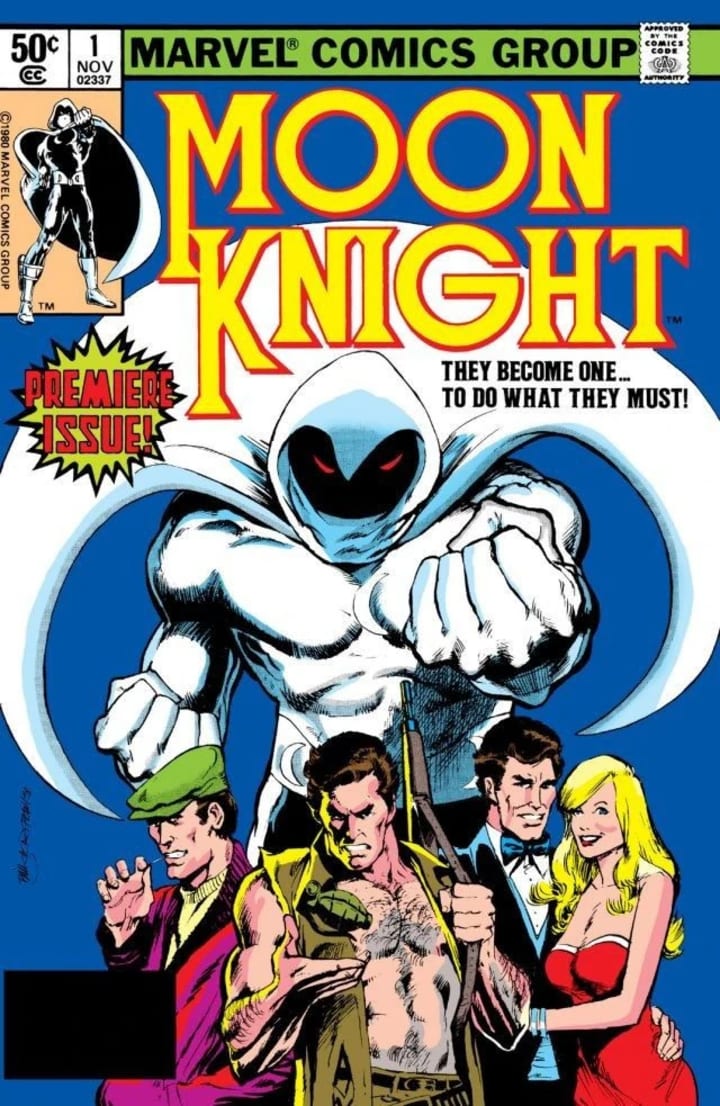
If you're watching the new "Moon Knight" series on Disney +, you may want to read the Moon Knight comics, but not know which ones to read, because yes, there have been many series. Read this one, the first series, from the 80s. The others are all very different, and some are definitely better than others.
Moon Knight has been called a Batman rip-off or Marvel's Batman, and neither of these descriptions are entirely true or entirely false. Moon Knight started off in Marel's popular "Werewolf by Night" series as an opponent of the supernatural werewolf character. Who would be better suited to fight a werewolf than someone with weapons made of silver?
The character became so popular he started having stories of his own, and he joined the Defenders, and eventually had his own series, where we learned that like Batman, Moon Knight is a millionaire playboy who fights crime at night using a mix of brains, skill, and technology. Unlike Batman, who has two sides - the playboy and the vigilante, Moon Knight has four: the playboy, the vigilante, a cab driver, and a mercenary. At the same time, Moon Knight has an interesting origin story in which as a mercenary, he was betrayed and left for dead, finding himself in front of a shrine to the Egyptian god of the moon and vengeance, Khonshu, who heals him to use him for his own means.-
19. The Demon Bear Saga (New Mutants 18-21)
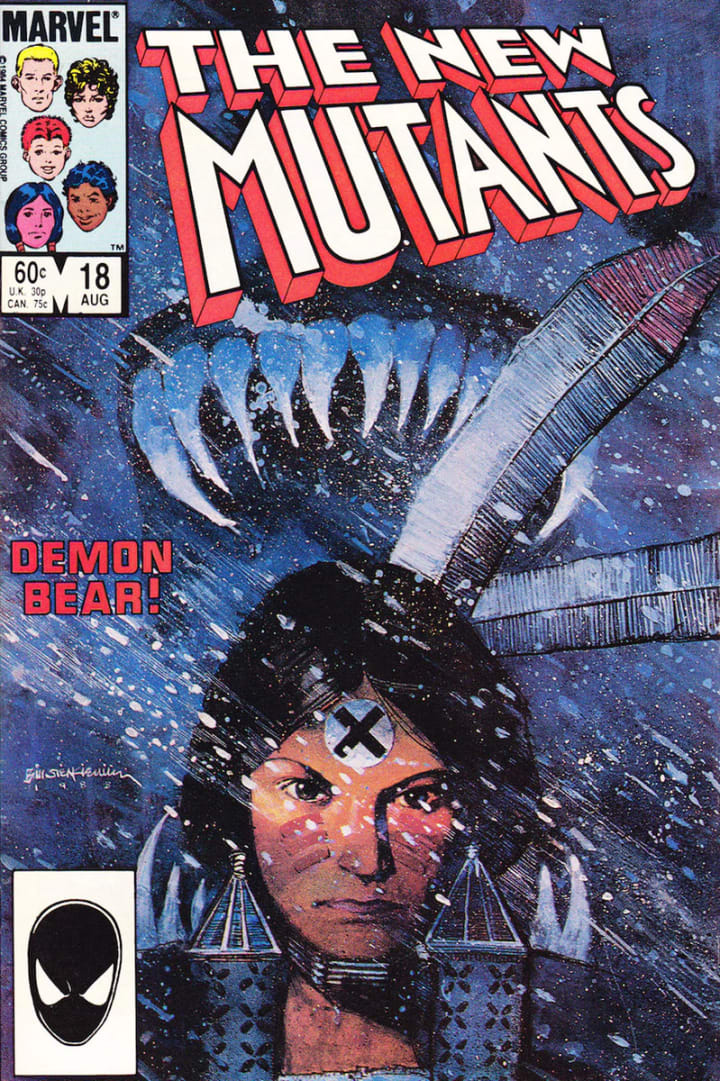
When "The Uncanny X-Men" became one of the hottest titles in comics following "The Phoenix Saga," a spin-off book was inevitable. The first of these was "The New Mutants," which initially sought to go back to the core idea of the X-Men back in the 60s, which was teenaged mutants learning to use their powers at the same time as they learned about life and the world, just like every other teenager.
For a while, that's what the book was about, but very quickly the team travelled to exotic locations like Asgard and Limbo, and encountered supernatural things, with the most memorable story being this one, the basis for the "New Mutants" film. In this story, New Mutant Mirage, who is a Cheyenne, is injured by a demon bear, which she had suspected of killing her parents. While she recovers in a hospital, the rest of the team has to fight the demon bear, which proves to be the toughest opponent they have ever faced, and the clash has lasting effects on all of them.
This era and this storyline in particular and noteworthy in particular for the covers and interior art by Bill Sienkiewicz, who made the title different from anything else being done at the time.
20. Introduction of Venom (Amazing Spider-Man 300)
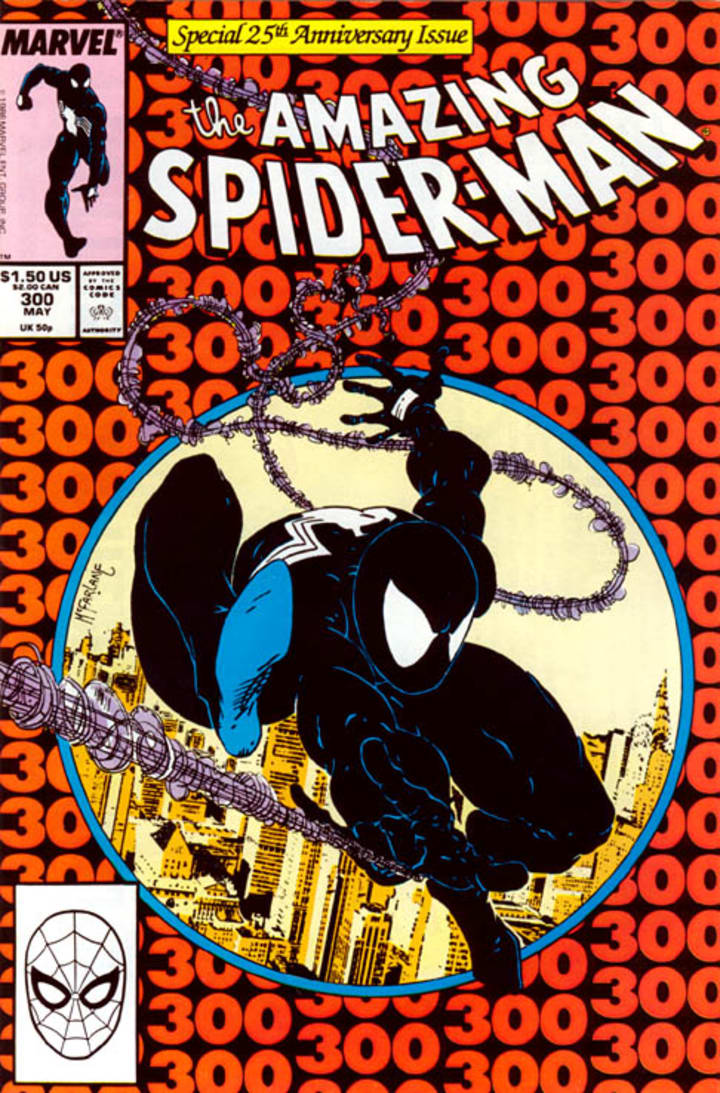
During the Secret War, Spider-Man's costume was ruined. That's when he first encountered the alien symbiote that was his original black costume, and at first the costume was a game changer for him. He didn't need to make web fluid anymore, the costume generated webbing out of itself. He didn't have to change his clothes anymore, the costume could look like any version of his costume, or like any kind of other clothing. But there was a problem: the costume didn't want to come off. It wanted to be on him all the time. It wanted to become one with him. So Spider-Man abandoned it and the costume found someone who would merge with it - rival Daily Bugle reporter Eddie Brock. With both Brock and the costume having personal grudges against Spider-Man and Peter Parker, a new spider-foe was created: Venom.
Taking place during artist Todd McFarlane's landmark run on Spider-Man, this story was the high point of a great period.
21. Assault on Avengers Mansion (Avengers 274-277)
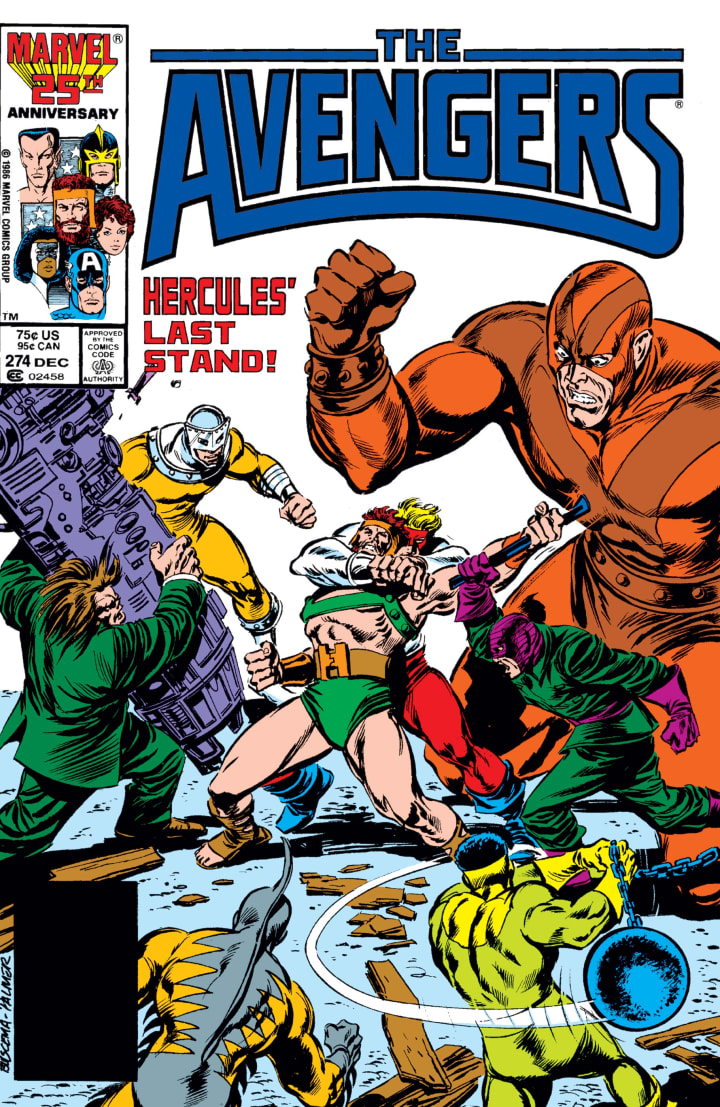
While the Avengers had fought many powerful foes and villain teams over the years, they had never fought a team that had an organized plan, with enough power or numbers to actually beat them. Until Baron Zemo organized a massive team of foes that launched an all-out assault right at Avengers Mansion, destroying the Mansion, torturing beloved Avengers butler Jarvis, and nearly killing Avenger Hercules, who was thought to be immortal if not practically invinceable. This story proved that yes, the Avengers could lose.
22. Alan Moore's Swamp Thing (Swamp Thing vol. 2 20-64)
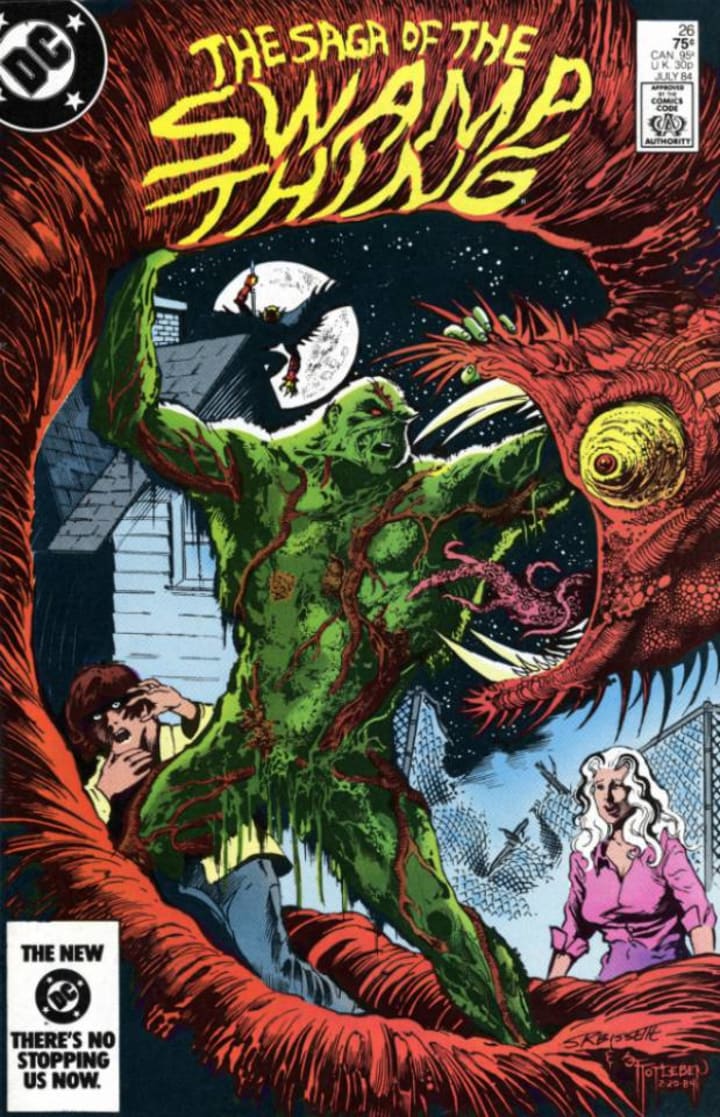
Alan Moore is one of the greatest comic writers of all time, with multiple works that are considered landmarks of storytelling. He doesn't do things the way other writers do. He takes chances, he pushes boundaries, and he doesn't flinch. He was already developing a bit of a name for himself when he started writing the second series starring Swamp Thing, a character created in the 70s who was an odd merge of superhero and horror character. Moore took the character in new directions and gave the title a new feel, making it must-read material every month. Under Moore's direction, Swamp Thing wasn't just a scientist reborn as a human-plant hybrid, he was the latest incarnation of a plant god connected to the overall biosphere. If that wasn't enough, Moore presented some truly horrifying villains, and he answered the question of how a plant creature with the mind of a man would have a relationship with a human woman. Yes, he went there.
23. Batman Year 3 (Batman 436-439)
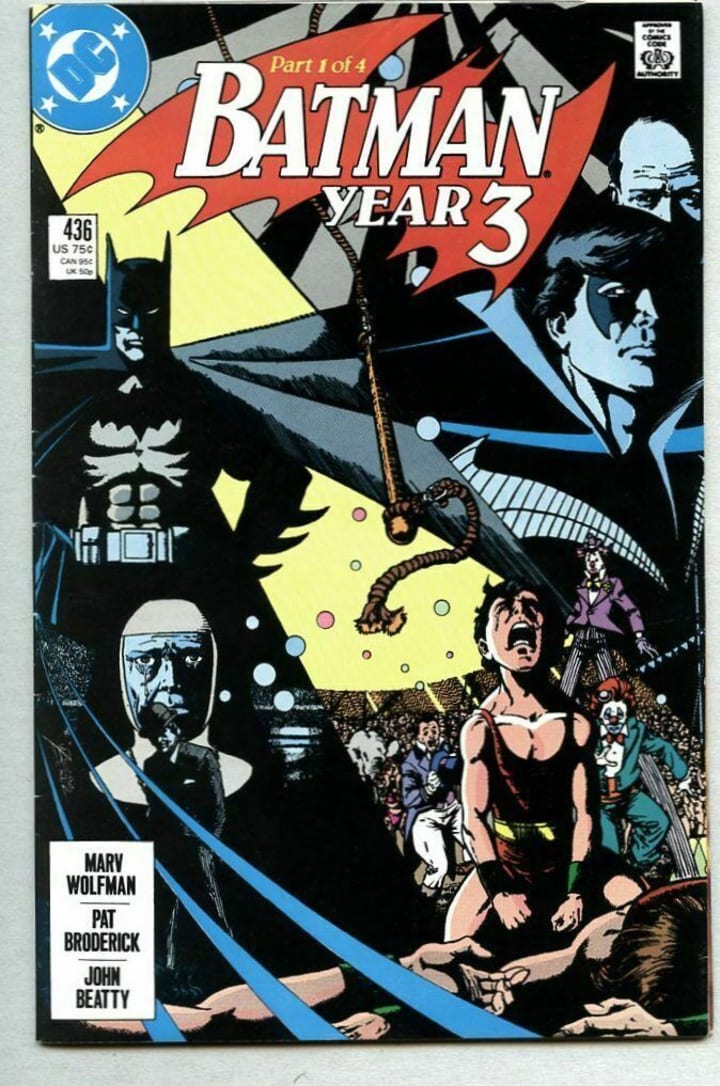
This story is the natural successor to both, "A Death in the Family" and "Batman: Year One," showing that Batman needs a partner like Robin, who balance out the darkness in himself. Without Robin, Batman draws more and more inside himself, getting colder, engaging less in life. That's what Tim Drake, who was introduced during this story, sets out to prove. Drake was at the circus the night Dick Grayson's family was killed, and as a lifelong fan of both Batman and Robin, and a budding detective with a keen mind, Drake has realized that Grayson was the original Robin. He also sees that since the second Robin has been gone and Grayson has moved on to become Nightwing, that Batman has been unhinged. He tracks down and confronts Nightwing, telling him Batman needs him back as a partner again. Nightwing is tempted, but says Tim is wrong. Batman does need a partner, but it should be Tim Drake as Robin.
Thus began Tim Drake's long run as Robin, which resulted in three solo mini-series and the first-ever ongoing "Robin" solo series. It also brought Batman more into the modern era, in which a new Bat-family of current and former partners could be called upon to help the Dark Knight.
24. Batman: The Killing Joke
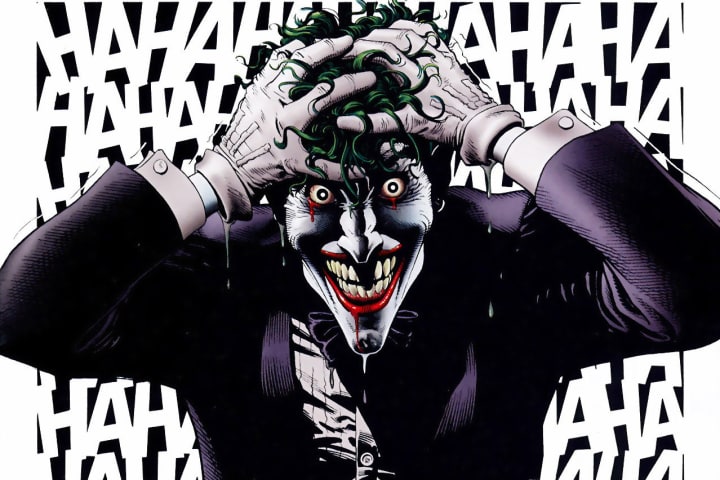
You've probably heard about it. You may have seen the animated movie. But you really should read the original graphic novel, the story that changes the relationship between Batman and the Joker, provides a look at the Joker's origin, and changes Batgirl's role in the DC Universe.
Written by legend Alan Moore with art by Brian Bolland, this story shows the Joker's beginning as a struggling stand-up comic who agrees to engage in a crime to make money for his family. When things go wrong due to the arrival of the Batman, he is forever made chalk white with green hair and garish red lips - a truly insane clown. Years later, Batgirl Barbara Gordon answers a knock at her door only to find the Joker, who shoots her through the spine. Joker goes on to capture Comissioner Gordon as well, leading Batman through a nightmare carnival designed to drive him mad in order to rescue the Comissioner. At the end, we readers and Batman have a better undertanding of the Joker, but Batgirl is left paralyzed from the waist down, dependent on a wheelchair. This leads to her adopting the new role of Oracle, later partner with Black Canary in the Birds of Prey.
25. Batman: Son of the Demon
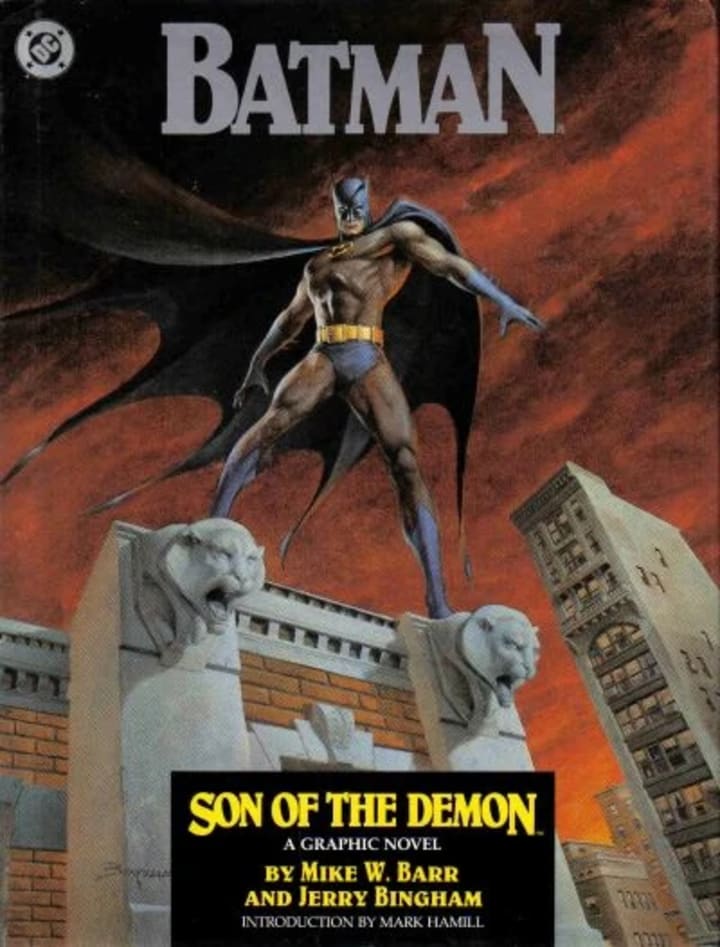
In the initial stories featuring Ra's al Ghul and the League of Assassins, we learn that Ra's sees Batman as a worthy successor to take over his role and provide him more heirs with al Ghul's daughter Talia. Talia and Batman have a strong attraction, but Batman is comitted to stopping, not joining in al Ghul's criminal endeavors, so he and Talia are at odds.
In this graphic novel, Batman and Talia clash yet again, but for one night they are together at last. And that night leaves Talia pregnant with Bruce Wayne's only known natural child.
This story shows a pivotal battle in the story of Batman and the League of Assassins, and it also shows the true origin of Batman's son Damian Wayne, the current Robin.
26. Hulk vs. Wolverine (Incredible Hulk 340)
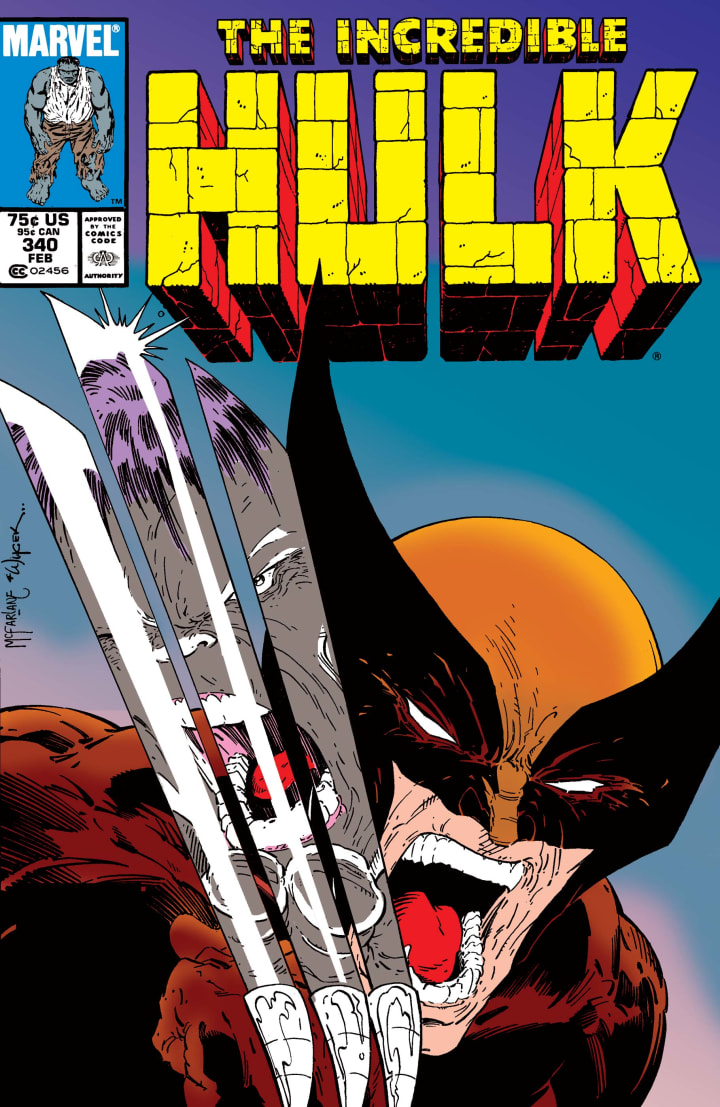
As most comic fans know, Wolverine's first full appearance was in Hulk 181, in which the Hulk encounters the supernatural creature the Wendigo while in the wilds of Canada and Canadian agent Wolverine is sent to stop both of them by any means necessary. That story featured the classic green Hulk and Wolverine as a character who wasn't fully formed yet. He was fast and agile, kind of strong and had these claws, but really wasn't much like the Wolverine readers came to know later.
In this meeting we get round 2. Wolverine is the temporary leader of the X-Men, with the team in Dallas during the events of the crossover known as Fall of the Mutants. He becomes separated from the team and encounters the Hulk, who since their last encounter has reverted to his original grey form. In this form, the Hulk is smarter and more cunning than in his classic green form, but also weaker.
The two fight to a standstill, with the fight narrated by their internal dialogue. When they first fought there was no talk of either of them having a healing factor. Green Hulk had thick skin. Wolverine had sharp claws that couldn't get very far into his skin. That was about it. In this battle, it has long since been established that both of them have healing factors and the only way for either of them to win is to damage more than can be healed in a short time. It's a brutal, bloody slug-fest that shows that as much as the two heroes grew to respect each other, the hate still ran deep.
27. V for Vendetta
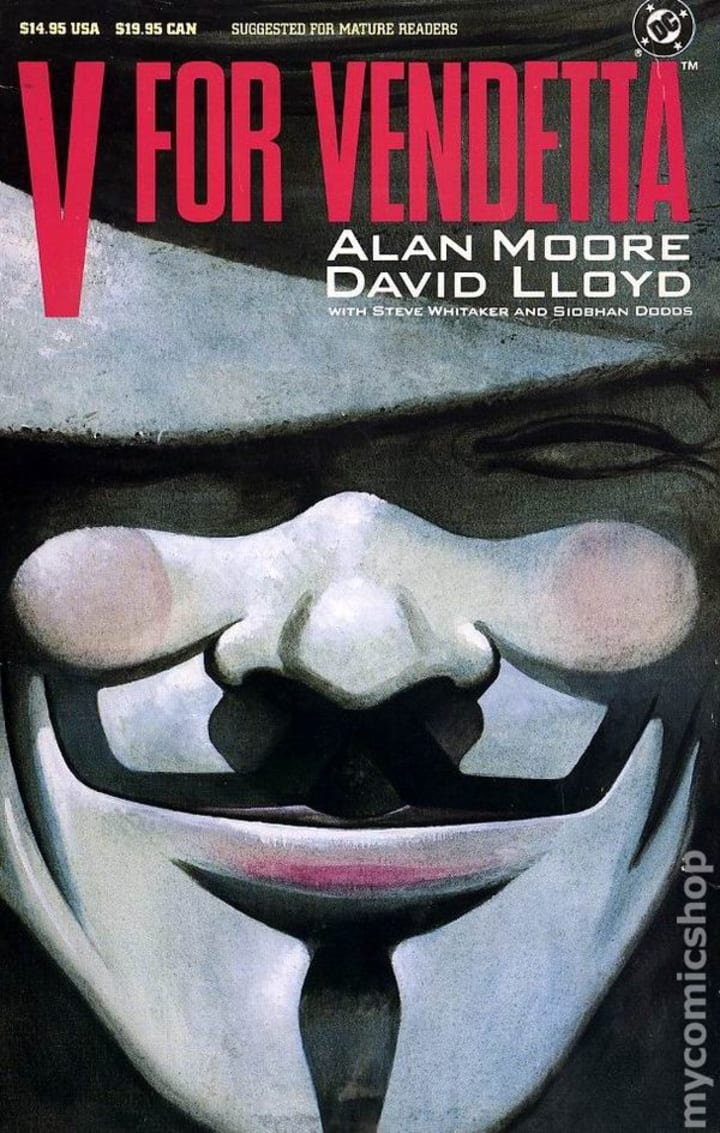
Yes, that movie started as a comic book. And there's Alan Moore again, thumbing his nose at the powers that be. Any powers that be. Especially, in this case, the British government.
Alan Moore packs a lot into his stories, and that's very much the case in this series, which has absolutely nothing to do with the DC Universe. It's a tale of a dystopian near-future in which the British government is out of control. One figure, the mysterious V, has a plan to set things right, but we don't know who he is or what his motives are. When we do learn, we can only cheer him on.
28. Watchmen
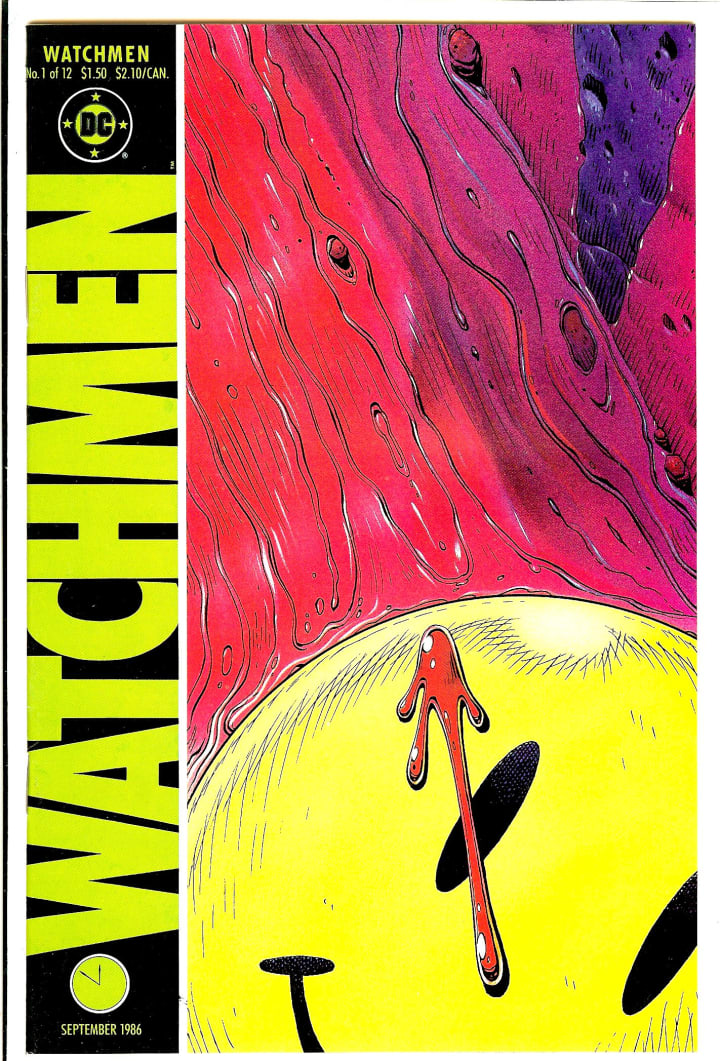
It's Alan Moore again, writing what may be the biggest Alan Moore saga of them all, which now DOES tie tangentially into the DC Universe, as a parallel world at least.
Telling the story of multiple generations of heroes starting in the 1940s, Moore presents a mystery as one of the current heroes, Rorschach, tries to find out who killed one of their former members, the Comedian.
Deep and complex, the story asks a lot of questions about society, government, and levels of power. It also asks the ultimate question, "Who watches the Watchmen?"
About the Creator
Gene Lass
Gene Lass is a professional writer, writing and editing numerous books of non-fiction, poetry, and fiction. Several have been Top 100 Amazon Best Sellers. His short story, “Fence Sitter” was nominated for Best of the Net 2020.
Enjoyed the story? Support the Creator.
Subscribe for free to receive all their stories in your feed. You could also pledge your support or give them a one-off tip, letting them know you appreciate their work.
Reader insights
Outstanding
Excellent work. Looking forward to reading more!
Top insights
Easy to read and follow
Well-structured & engaging content
Expert insights and opinions
Arguments were carefully researched and presented


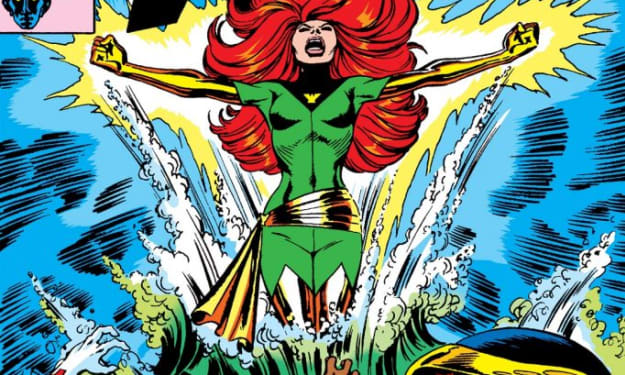



Comments
There are no comments for this story
Be the first to respond and start the conversation.